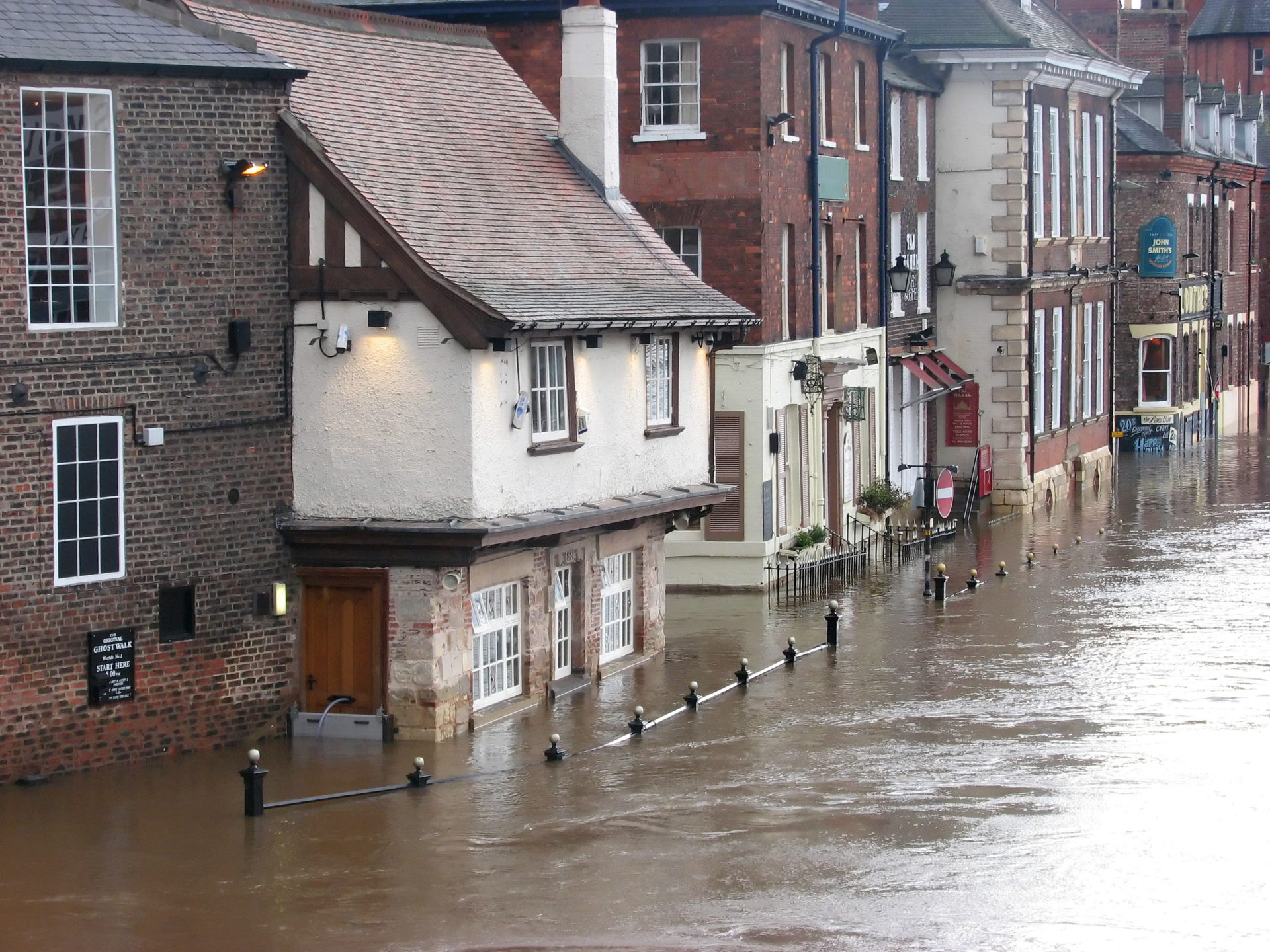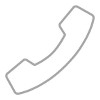Blog Archives
Post navigation

Masdar City
ArcGIS helps us to manage assets, visualise routes and make informed decisions on a construction site of unprecedented size and complexity
Citigen used Esri’s ArcGIS platform in a ground-breaking project to build the world’s first ever carbon neutral, zero waste city, in the harsh surroundings of a desert in the United Arab Emirates. Use of ArcGIS helped the organisation to manage assets with environmental sensitivity and make informed decisions on a construction site of unprecedented size and complexity.
The Customer
Abu Dhabi, capital city of the United Arab Emirates, has thousands of dedicated people, billions of dollars and years of effort coming together to achieve a groundbreaking goal: the world’s first entirely carbon-neutral, zero-waste city – constructed from scratch. Commissioned by the Abu Dhabi Future Energy Company, the city’s five and a half square kilometres will be home to 50,000 people, 1,500 businesses and 40,000 daily commuters.
ArcGIS helped Citigen to identify and then resolve potential issues in the master plan before they created unnecessary costs and construction delays
GIS proved invaluable for managing the placement of facilities and the monitoring the condition of assets to improve carbon neutrality
The organisation used GIS to visualise routes and make decisions about the sizing of roads to improve access for emergency services
The Challenge
This is an experiment of colossal proportions, with no historical precedent, but it is also a serious business venture with a tight schedule. The harsh desert environment adds complexity and means understanding geography is vital: sun angles, wind patterns, street widths, building density and height, and even city orientation.
Never before have so many environmental facilities come together in one place… GIS helps Masdar select sites, evaluate alternatives and visualise construction sequences for the whole city
Shannon McElvaney – Site Control and GIS Manager, Citigen
The Solution
Citigen and Esri are Enterprise Business Partner and Authorised Systems Integrators on the project and use ArcGIS for spatial planning, modelling and programme management. Geographic Information System (GIS), including cutting-edge 6D GIS modelling, are used to track costs, schedules and carbon emissions, and empower collaborative thinking for creative problem-solving. GIS will also underpin an automated, paperless asset management system. “Masdar City was planned with careful consideration of both human and physical geography”, explains Shannon McElvaney, Citigen’s Site Control and GIS Manager, “So at the very start of this project, extensive analysis was carried out on traditional Arab city infrastructures.”
It would have been infinitely more difficult to manage this project without GIS… Maps help people make major decisions every day that benefit this project
Shannon McElvaney – Site Control and GIS Manager, Citigen
The Benefits
Carbon-neutral build
To be a truly carbon-neutral city, the construction must be carbon-neutral (including accommodation and transport for 5,000 labourers). “GIS has proven to be very valuable for the logistics of the build”, confirms McElvaney. “It helps the Masdar team to do everything we can to minimise use of materials, mileage and carbon emissions.”
Meeting the master plan
With more than one hundred different contractors, ensuring that each decision is aligned with the master plan is complex. GIS modelling has made potential problems more visible than on a massive spreadsheet. “We spotted a set of lines on one structure that was about 30 centimetres off from the previous line work”, McElvaney reveals. “If that structure was a bridge, a mistake like that could be very time and cost-intensive to fix at the construction stage. GIS is extremely helpful in preventing that kind of thing from happening.” Occasional environmental infractions are inevitable too, but by plotting incidents based on GPS-tagged photos, corrective action can be taken quickly.
Optimising facility placement
Masdar includes water and sewage treatment plants, recycling centres, a solar farm, geothermal wells, and plantations of different tree species useful for producing biofuels. “Never before have so many environmental facilities come together in one place… GIS helps Masdar select sites, evaluate alternatives and visualise construction sequences for the whole city”, explains McElvaney
Planning unique, safe infrastructure
Like a traditional Arab city, Masdar is designed for pedestrians, but uniquely, the walkways will be elevated, with Personal Rapid Transit (PRT) at ground level. “We used GIS to visualise all routes for the PRT network, and to test predicted walk times between PRT stations”, confirms McElvaney. The accuracy of GIS also revealed that the pedestrian streets were too narrow for fire engines to turn around. Streets were resized before construction, ensuring a safer city from the start.
Balancing carbon, cash flow and schedule
Although carbon neutrality is paramount, cashflow matters too, so the team built a 6D GIS model. “Visualising different combinations helped them to sub-divide original phases into smaller neighbourhood sub-phases which helped to manage costs while monitoring impacts on carbon emissions”, McElvaney explains. “When GIS is used across disciplines and departments it facilitates both collaboration and innovation.”
Clear, fast progress reports
Monthly Google Earth Pro mashups show progress. “When it’s 3D GIS, it’s very easy to convey complex information which everybody can digest quickly”, says McElvaney.
Maintaining the carbon-neutral vision
After completion, GIS will be used daily to manage Masdar City’s assets and maintain carbonneutrality. “The GIS will be integrated with a Computerised Maintenance Management System which will automatically generate work orders that are sent directly to technical engineers who will then carry out the work, and instantly update the system… if you can constantly make small enhancements to your assets, you can effectively double the life of those assets”, enthuses McElvaney. “Masdar will use GIS to visualise energy and water usage for the city as a whole and communicate the status to residents in novel ways… helping everyone in Masdar City work together to cut down on resource use.”

Severn Trent Water
With a need to log 140,000 incidents a year, call centre agents can now record accurate incident locations, over the phone, in half the time
To help respond to over 140,000 incident reports every year, Severn Trent Water integrated Esri GIS technology into its customer relationship management (CRM) system. Call centre agents can now locate burst pipes and other faults with far greater accuracy, enabling field-based engineers to make repairs more quickly and cost effectively.
The Customer
Severn Trent Water is one of the UK’s largest utility companies, supplying nearly two billion litres of drinking water a day to eight million people in an area of more than 21,000 square kilometres.
Call centre agents can now record accurate incident locations, over the phone, in half the time than before
With accurate location information, engineers waste less time looking for incidents, saving money and enabling repairs to be made more promptly
Severn Trent Water uses the incident map to reduce the time previously required to produce reports for OFWAT
The Challenge
Every year, Severn Trent Water receives over 140,000 incident reports, such as burst pipes and interrupted water supplies. The company has a duty to respond quickly– but it was often hard to establish the exact location: service centre staff had to find a vaguely defined place, using road atlases and directories.
Up to 95% of incidents lacked a precise grid reference so jobs were sometimes wrongly routed. “Sending an engineering repair team to a wrong location is a very expensive mistake to make”, explains Dave Pearson, lead GIS architect at Severn Trent Water. “Valuable time is lost and a lot of additional effort is wasted trying to find out the correct location”, increasing costs and damaging customer relationships.
We felt that Esri’s GIS technology would give us the fastest possible retrieval of addresses and maps. Indeed, it has lived up to our expectations and, in some areas, surpassed them
Doug Cubin- GIS Consultant to Severn Trent Water
The Solution
Severn Trent Water decided to solve this with a comprehensive and flexible gazetteer service, backed up with digital maps. “We needed a way to ensure the accuracy of the location information collected in the service centre”, says Pearson. “By greatly reducing the probability of sending out inspectors and teams to the wrong location, we felt that we had an opportunity to improve efficiency and reduce costs.”
Based on successful use of GIS solutions from Esri UK to manage underground assets, “We felt that Esri’s GIS technology would give us the fastest possible retrieval of addresses and maps. Indeed, it has lived up to our expectations and, in some areas, surpassed them”, says Doug Cubin, GIS consultant to Severn Trent Water.
They chose Esri UK’s Intranet mapping solution to make GIS available to all service centre staff, and developed a gazetteer application (based on Esri’s spatial database engine) for comprehensive searching by address, motorway junction, schools and even chemists and pubs. “If a caller reports a problem on the bend in the road, and can roughly describe the area and a landmark or two, we can find it!” say Severn Trent Water.
To obtain a precise address and postcode, staff follow an on-screen workflow in a customer relationship management (CRM) application, which opens the GIS automatically. Staff drill down into the maps, looking for what the caller describes; when they find it, clicking on the map attaches a precise X-Y coordinate to the incident report, along with the postcode of the nearest address.
Almost immediately, GIS became indispensable in the call centre
Doug Cubin – GIS Consultant to Severn Trent Water
The Benefits
GIS has transformed the way that customer agents work and has dramatically improved efficiency. Field teams usually find incidents quickly: less wasted time reduces costs and improves customer service.
- The time taken to record an incident location has more than halved.
- In at least 95% of calls requiring a field visit, engineers have an accurate grid reference and address before they leave.
- The annual incident map that Severn Trent Water provides for OFWAT is used for analysing patterns and clusters and for deciding infrastructure investment: it is now much quicker and simpler to produce. The precise logging of X-Y coordinates enable automatic processing of much of the data, avoiding painstaking manual data cleansing.
- Time saved on incident logging and data cleansing has been used for other quality improvements.
“To make this year’s reporting a less onerous task it really was crucial for us to get an accurate spatial reference for each incident report – and that’s precisely what we have achieved”, says a Severn Trent Water consultant.
The huge success of the GIS is evidenced by users’ enthusiasm. The intuitive interface and seamless integration with existing workflows ensured rapid acceptance so that it became indispensable. “It has become a ‘priority one’ business system. If a hardware failure causes a system outage, it has to be fixed straight away.”
We will be able to make this GIS available to potentially several thousand employees located across multiple sites, and will look to Esri UK for help to realise this vision
Severn Trent Water
The Future
GIS was initially used by 250 customer agents at one site. Severn Trent Water plans to make an adapted version available to all employees, so they can search and access accurate digital maps over the Intranet. “Scalability is a key advantage of the GIS solutions”, say Severn Trent Water. “We will be able to make this GIS available to potentially several thousand employees located across multiple sites, and will look to Esri UK for help to realise this vision.”

Schiphol Airport
ArcGIS delivers a single asset management tool to gain a clear understanding of all assets on site, from underground cabling to individual runway lights
Schiphol, the fifth busiest airport in Europe, uses Esri’s ArcGIS as an asset management tool to gain a clear understanding of all assets on its site, from underground cabling to individual runway lights. This single asset management solution plays a vital role in improving operational efficiency while supporting more pro-active decision-making.
The Customer
Schiphol Airport, one of Europe’s busiest airports, needed to develop a simple and easy-to-use asset management system that would provide a clear view of all assets, keeping information up-to-date, accurate and complete. With a detailed list or requirements, Schiphol approached Esri Netherlands and its partners to create a platform that would support the easy entry and retrieval of data and information.
Schiphol has switched to GIS to optimise its entire business operations. All assets can now be viewed with one common operational picture
The Challenge
Previously, the diversity of Schiphol’s assets such as buildings, platforms and runways, gas, water, lighting and cabling, made it extremely challenging to locate asset information and create management reports. The airport unsurprisingly used multiple systems to perform these tasks, which proved to be an inefficient process. “We wanted to move to a system where we could centrally manage and retrieve all asset information,” said Nico Wasserman, Head of Data Management, Schiphol. “But the variety of assets made that difficult.”
With the new integrated system, Schiphol can now be more proactive in its decision-making when there are maintenance interventions or disruptions
Nico Wasserman – Head of Data Management, Schiphol
Greater transparency
With the new integrated system, Schiphol can now be more proactive in its decision making when there are maintenance interventions or disruptions. It is possible to see, at a glance, the consequences of disabling one component on other vital facilities; for example the impact of an electrical failure on other installations can be seen immediately. “We can then act quickly and decisively, extremely important in a dynamic environment such as Schiphol”, according to Wasserman.
Schiphol has made major improvements in the speed of resolution to emergency incidents, given the access to all information, at any time, from any location
The evolution of a new technology platform: SGIS
In 2005, Schiphol decided to switch to GIS in order to optimise its entire business operations. Since then all surface and underground assets have been mapped and it is now possible to ‘unlock’ and view the information with one common operational picture. “We have carried this out in planned phases and are now reaping the rewards,” added Wasserman. By implementing SGIS (Schiphol GIS), Schiphol has been able to replace the multiple systems that were in place. “Adopting this approach has resulted in our entire IT architecture becoming more transparent. By replacing the different asset information systems with one central GIS system, the quality of the information increases accordingly.”
The immense size of the site and developments such as Bring Your Own Device, make it completely impractical for the workforce to access to SGIS purely from fixed workplaces
Any place, any time
Supporting operational service bodies, along with Schiphol, can view any malfunction regardless of the malfunction’s location. This has major benefits particularly during an emergency incident; access to all information, at any time, and at any place, can make a major difference in the speed of resolution.
Asset information in the SGIS can also be obtained via a web portal. Wasserman anticipates that employees will soon be able to walk to the relevant field location with their smartphone or mobile device, carry out their required duties and enter the information directly into the system. “This is of particular importance for an airport city such as Schiphol. The immense size of the site and developments such as Bring Your Own Device, make it completely impractical for the workforce to access to SGIS purely from fixed workplaces.”
The entire IT architecture has become more transparent and the quality of information has increased
Analysis and visualisation
In recent years, Schiphol and Esri have worked together to build the asset management platform so that every authorised employee can add and retrieve data relating to his/her own work area. Numerous parties have worked together on collating and structuring the entirety of the data, ensuring that all knowledge workers have the ability to review and use the data within.
“Schiphol is really advanced in the field of data collection, they want to do more than just collect data,” said Alexander Molhuysen, Business Manager at Esri Netherlands. “They want to be able to utilise all of their data, retrieve the appropriate information in a simple way so they can make the correct decisions, quickly.”
SGIS also has applications in other areas, such as maintenance work. “Sometimes, when work is carried out, it is necessary to close a corridor, pier or hallway,” added Molhuysen. “The routing must then be automatically adjusted and SGIS shows the alternatives, including the shortest route for redirecting passengers. When analysing malfunctions, the system not only visualises a 2D but 3D image showing, for example, sprinkler networks. A vast amount of information can be accessed regarding the composition of specific installations.”
We are going to continue integrating Schiphol’s systems, allowing the airport city to continually achieve efficiency gains and further improve operational synergies
Nico Wasserman – Head of Data Management, Schiphol
Innovation
Schiphol is keen to continue using Esri products in the future. With SGIS, the status of the entire breadth of its assets can be dynamically visualised in a Schiphol-wide map. And the system is scalable, with the ability to take on board additional data from integrated systems. “We are going to continue integrating Schiphol’s systems, allowing the airport city to continually achieve efficiency gains and further improve operational synergies” concluded Nico Wasserman.

Royal Sun Alliance (RSA)
GIS is used to calculate premiums far more accurately, speeding up the turnaround time of risk assessments from several days to being available instantly
A pioneer of GIS in the insurance industry, Royal Sun Alliance (RSA) uses Esri’s ArcGIS technology to help it more accurately assess risk levels at individual properties and addresses. This insight enables it to optimise its profitability, reduce over-exposure to risk and operate more efficiently.
The Customer
Originating in London, RSA is one of the world’s leading multinational insurance groups. It specialises in general insurance, and has 17 million customers in 130 countries.
RSA has improved operational efficiencies, speeding up the turnaround time of risk assessments from several days to being available instantly
GIS enables RSA to calculate premiums far more accurately, based on a more reliable understanding of actual risks
The organisation can sell more insurance policies to a wider number of customers, whilst avoiding over-exposure to risks
The Challenge
RSA wanted more accurate tools for managing exposure to risk in commercial property, optimising capacity, handling claims, purchasing reinsurance, and targeting marketing campaigns.
GIS has a massive future in my industry; we are really only just dipping our toe in the water, and I genuinely believe that my organisation is one of those leading the way
Graham Heale – Property Portfolio Director
The Solution
The Esri UK insurance platform comprises hubs (modules) providing spatial support to business functions. It uses xy coordinates to establish the distance between a building and a nearby risk, within 1-2 meters of accuracy, spatial analysing the effect. It interoperates with leading platforms and data formats, in server and mainframe environments. Most processing is “behind the scenes”, so commercially sensitive data can be managed in-house and training requirements are minimal.
When a customer calls, the address is geocoded and passed to the perils hub, for risk scoring. If the accumulation hub finds RSA’s exposure at this location is within defined limits, the new risk is automatically approved and the accumulation hub data updated. (If exposure would be too high, the location is flagged for investigation.)
The Esri UK Insurance Platform can provide assurance to regulators and shareholders that RSA fully understands the risks it underwrites
The Benefits
Accuracy reduces risk
Postcodes are too vague. Using xy locations pinpoints where each building is in relation to others, and adding data layers (e.g. crime, flood and subsidence) means risk assessment and premiums can be more accurately calculated. “Having that much more granular idea of where our risks are – and where they are approximate to each other – ensures we don’t overexpose ourselves”, explains Graham Heale, Property Portfolio Director.
Optimised capital capacity
With reliable risk assessment, RSA allocates capital and manages reinsurance more effectively, freeing capacity to sell more insurance, whilst avoiding over-exposure. “The greater the granularity of the data, the greater the understanding of risk, and the more effective we can make our reinsurance purchase”, Heale explains. “This doesn’t mean we do away entirely with the contingency… but we can be more refined in our purchase.”
Competitive edge
Competitors quote high premiums for all properties in a postcode that has flooded, whereas RSA can give lower quotes for individual properties that have never been affected. “We were able to make flood insurance available to a wider range of customers”, notes Heale.
Faster processing
“Where before we would expect a risk assessment to be performed in, say, seven days, the response from the new system is pretty much instant, as in most cases no manual assessment is needed”, Heale observes. Automated risk assessment and batch processing free up underwriter time for more complex assessments. Heale is enthusiastic: “We have no reason to assume anything other than 100% confidence. It’s going to be fantastic.”
Handling major events
Some events cannot be planned for and stretch call centres and computer systems. When the Buncefield oil terminal exploded, Heale’s team modelled and estimated RSA’s loss within three hours; “Following seven months of actual physical assessment of the damage and loss adjustment, the number that we gave is still within 7% of the final cost”, Heale affirms. Before GIS, it would have taken a week or two to estimate a less accurate number. Furthermore, “Because the system helped us to gear up quickly, we were able to send an emergency response vehicle to the scene within a couple of hours”.
Demonstrate solvency
The Esri UK Insurance Platform can provide assurance to regulators and shareholders that RSA fully understands the risks it underwrites and complies with legislation such as Contract Certainty and Solvency 2. “I do believe that… the system may be able to assist us in our discussions with regulators around how effectively we are managing the risks in our portfolio”, muses Heale.
Targeted marketing
“The geographical mapping tools can also be used to identify ‘cold spots’, or areas in which we could write more business without affecting our accumulated risk”, Heale notes.
Future benefits
RSA has used Esri GIS for many years, and now plans to convert all postcode data into geocoded data and give web service access to underwriters outside the UK.
Heale summarises, “I guess the real ‘lightbulb moment’ for me was the realisation that it wasn’t the knowledge of topography, or of river flows, or of insurance, or of GIS that actually made the difference… but it is the combining of all those datasets with our GIS skill, our mastery of the insurance risk, of actuarial pricing, and of our capital management capability that has truly made a winning formula for us.”

Willis Group
We can make real-time information from a disaster zone available to our analysts in London so they can provide well-informed advice to our clients
When major flooding occurred in Central Europe, international insurance broker Willis used Esri’s ArcGIS Collector App to gain detailed, real-time insight into this devastating natural disaster. The company could then provide well-informed advice to its customers and strengthen its reputation as an expert on flood risk.
ArcGIS Collector App allows more precise, location-specific data and imagery to be collected in the field
Willis can make up-to-the-minute information from the disaster zone instantly accessible to analysts back in London
The company gains better quality information, which enables it to improve its flood models and offer better advice to customers
The Challenge
Incidents of severe flooding are expected to double in frequency by 2050, thrusting more communities into danger and causing significant, additional damage to property. For insurers, this means that flood-related claims are now a considerable risk factor and a growing proportion of their accumulated, insured risk.
As a global risk advisor, Willis Group Holdings plc (Willis) provides services to insurance and reinsurance companies, to help them better understand flooding, as well as other natural catastrophes. While it analyses satellite and aerial imagery to gain insight into flood patterns, Willis also recognises the vital importance of conducting ground surveys, to identify loss-generating mechanisms in more detail.
Between May and June 2013, vast swathes of Germany, Austria and the Czech Republic were afflicted by devastating floods. Willis quickly started to prepare a team of surveyors to visit the flooded regions and collect information about flood depths, damage and the effectiveness of local flood defences. As water levels rose, losses escalated and fatalities occurred, it became clear to Willis that it would need a more effective way to ensure the accuracy of the data it collected.
If we hadn’t had the ArcGIS Collector App, it would have been significantly more work
Timothy Fewtrell – divisional director for catastrophe risk, Willis
The Solution
Willis has been using geographic information system (GIS) solutions from Esri UK for many years and places considerable importance on spatial analytics as an enabler for technical innovation and client service excellence. During the flooding crisis, it decided to employ Esri’s ArcGIS Collector App for the first time. It took the organisation just a few days to set up the mobile GIS solution to meet its survey requirements, and less than a week after the Danube burst its banks, surveyors were on route to Central Europe.
Timothy Fewtrell, divisional director for catastrophe risk at Willis, led the 2013 survey. He used the ArcGIS Collector App on his Apple iPhone to note his precise location, via GPS, record survey observations and upload photographs. All of the location-specific data collected from sites across three countries was then automatically uploaded to Esri’s cloud-based GIS platform, ArcGIS Online, where it was instantly accessible to office-based analysts in London.
“If we hadn’t had the ArcGIS Collector App, it would have been significantly more work,” says Fewtrell. “We would have had to manually link photographs with locations when we got back to the office, and the information gathered would not have been anything like as precise from a location perspective.”
The ArcGIS Collector App helped us make improvements to our flood model, allowing it to become seen as state-of-the-art. It helped to solidify our foothold in the industry as the preferred supplier for flood risk assessments
Timothy Fewtrell – divisional director for catastrophe risk, Willis
The Benefits
The use of Esri’s ArcGIS Collector App enabled Willis to collect accurate information about the 2013 flooding and make it accessible almost immediately to its analysts in offices around the world. Fewtrell believes that this ability to share real-time insight is incredibly valuable to the business. He says: “When our analysts can gain rapid visibility into what is actually happening on the ground, they can monitor risk very closely and provide well-informed advice to customers.”
Using the information gathered during the 2013 ground survey, Willis was able to develop detailed reports about the natural disaster, which were valued by customers. “We were able to show our customers that we really understood the dynamics of that particular flood incident,” Fewtrell recalls. “We could give them the detailed information they needed to help them assess damage claims more appropriately and make future policy decisions.”
The information gathered using the ArcGIS Collector App was also used by Willis to help it validate and improve its well-renowned flood risk model for Central Europe. Its model subsequently grew in accuracy, enhancing the company’s reputation and credibility in the sector. “The ArcGIS Collector App helped us make improvements to our flood model, allowing it to become seen as state-of-the-art,” Fewtrell says. “It helped to solidify our foothold in the industry as the preferred supplier for flood risk assessments.”
The 2013 flooding was undoubtedly one of Europe’s most devastating natural disasters. 25 lives were lost and the total damage done to commercial and residential properties has been estimated at €12 billion. Willis now has an extensive geospatial repository of data about where flood losses occurred in this event, the condition of flood defences at specific sites, actual water level recordings and more besides. As Fewtrell says, “all this information has significant value as intellectual property for Willis and will have many different uses for years to come.”

GreenSquare Group
Esri was the clear winner on all fronts. ArcGIS works with any type of data, there is an extensive user community plus the price was highly competitive
Having recognised that 90% of its business data was geographical, GreenSquare Group made the decision to deploy Esri’s ArcGIS platform to consolidate and visualise information throughout its entire organisation. The benefits achieved span simple operational, cost-saving gains to supporting major strategic decisions such as identifying significant new opportunities to expand its housing portfolio.
The Customer
GreenSquare Group is a major provider of housing, regeneration, care and support and commercial services across Wiltshire, Oxfordshire and Gloucestershire. Managing 10,000 properties for social and affordable rent, and offering homes for sale, the group also works with Kevin McCloud’s company Hab on innovative eco-housing projects.
GIS analysis has revealed several new sites for development, for which the potential land value is approximately £2 million
Employees can perform feasibility studies for new developments in just two days, eight days more quickly than beforehand
Maintenance activities are planned more strategically by location, to help improve cost efficiencies across the business
The Challenge
GreenSquare had a long-term vision for GIS that would positively impact the whole organisation. It wanted to use the technology to join together all departments and deliver benefits across the business, in areas such as development and regeneration, disposals, welfare reform, rent arrears, anti-social behaviour, tenant profiling and maintenance.
“To deliver our long-term strategy we wanted a more powerful GIS, one that was proven in the industry and at the right price,” explained Dawn Francis, Group GIS Manager at GreenSquare. “Part of the GIS vision was that around 90% of data within the group was geographical and should be mapped. This holistic approach to using our data more intelligently would allow us to be more strategic in how we operated.”
GreenSquare’s board members are also keen to support innovative ways to improve the business or overcome new challenges and were enthusiastic to see how GIS could help.
Esri was the clear winner on all fronts. ArcGIS could work with any type of data, the company had an extensive user community plus the price was highly competitive
Dawn Francis – Group GIS Manager, GreenSquare Group
The Solution
Following an in-depth tender process, GreenSquare selected Esri UK’s ArcGIS as its new GIS platform. “Esri was the clear winner on all fronts,” commented Dawn. “ArcGIS could work with any type of data, the company had an extensive user community plus the price was highly competitive.”
In order to get the most out of the new GIS, GreenSquare first spent around five months data cleansing their information. This involved re-evaluating all geo-codes for 3,000 flats and dispersing the markers so it could see each individual property within multi-storey blocks. “To function strategically, we first needed to disperse the markers to achieve a more granular view of all our properties and see the attribute data linked to each flat,” said Dawn.
Coming from a Business Intelligence background, Dawn had a valuable insight into the type of business reports that could be visualised within the GIS. By applying this expertise, GreenSquare has been able to deliver new levels of location intelligence across the company.
Esri’s GIS has linked disparate business units, allowing for a better co-ordination of how we do business. The benefits achieved span simple operational gains to supporting major strategic decisions
Dawn Francis – Group GIS Manager, GreenSquare Group
The Benefits
The main benefit for GreenSquare has come from bringing together disparate types of information in the GIS and visualising them in one place. “Being able to toggle between multiple data streams on the same map has opened up endless opportunities to interrogate the data and spot new insights,” said Dawn.
GIS is already helping drive the development pipeline, which has a target of building 30 new units a year on existing land under its ownership. By overlaying property types, access routes, who owns what land, where demand for housing is and many other factors needed for an initial investigation, GreenSquare has been able to reveal several new sites for development. So far, the potential value of this land is approximately £2m.
“Using the GIS we can switch different types of information on and off, to ask questions relating to a location, arriving at a decision about its suitability for development, conversion or regeneration,” said Dawn. “Efficiently evaluating and unlocking development land will lead to additional income from new homes for sale and rent from land holdings.” commented Dawn. “This was previously labour intensive using spreadsheets or disparate maps. To operate strategically you have to bring your data to life with interactive maps.”
Major efficiency gains are also being achieved via the new GIS. Feasibility studies for new development sites which used to take 10 days have been cut to two days, while the property disposal process has been reduced from four days per month to around three hours. “The GIS has removed a lot of site visits, physical meetings and manual hard copy processes,” added Dawn. “All the necessary information is available online in the GIS and is being used by all staff, right up to the board.”
The GIS is also making it easier to manage maintenance more efficiently. In the past, planned maintenance programmes were scheduled according to alphabetical road order. But this meant homes in streets nearby might have had work done months apart, when it made more sense to carry out the work at the same time. Now maintenance schedules can be seen on a map and planned in the GIS, allowing better allocation of resources.
Future plans at GreenSquare include the introduction of real-time maintenance scheduling via mobile GIS on handheld devices, to minimise mileage and maximise efficiencies. Some GIS services will also become external so tenants can go online and find information for themselves to enhance customer service.
“Esri’s GIS has linked disparate business units, allowing for a better co-ordination of how we do business,” concluded Dawn. “The benefits achieved span simple operational gains to supporting major strategic decisions. By using location information in an intelligent way, GreenSquare is driving new revenue streams and injecting new levels of operational efficiency into the business.”

Ipswich Hospital NHS Trust
This project has changed the conversation at board level to focus on moving to a more sophisticated way of visualising and reporting data
In a pioneering NHS project, Ipswich Hospital NHS Trust has used Esri’s ArcGIS platform to help better understand demand for its services amongst the local population. The insight gained will help it to adapt resources to meet anticipated needs, as well as conduct health education campaigns targeted to the areas that need them most.
The Customer
Ipswich Hospital NHS Trust (IHT) provides healthcare services to more than 356,000 people throughout the local area. One of the hospital’s key objectives is to move to the centre of a network of co-located and integrated services, delivered to meet demand for healthcare across the region as well as driving education and research. It’s an ambitious goal, but to meet it IHT needs to map out where that demand is coming from.
ArcGIS, in conjunction with actuarial analysis, gives Ipswich Hospital NHS Trust faster time to insight about the needs of the population in its catchment areas
The Trust can use this insight to focus its resources on the departments and times when they will be needed most, reducing wastage
Hot spot maps show where key health issues are most prevalent, so the Trust can target health awareness campaigns in these specific localities
The Challenge
With over 75,000 emergency department attendances a year and nearly 30,000 unplanned emergency admissions, IHT, like many healthcare providers across the UK, faces tough challenges in managing the demand for its services. The provision of healthcare is an essential service and an emotive topic, so it is crucial that it can predict demand across the population and respond by meeting it quickly. To do that, ‘visualising’ the challenge it faces can drive real insight and, ultimately, lead to a better provision of service for the people it serves.
According to Paul Scott, Director of Finance and Performance at the Ipswich Hospital Trust (IHT), “our existing information solutions rely on extensive use of spreadsheets. They are therefore simply unable to provide us with the level of insight into patterns of behaviour in core populations that we urgently need. So, we decided to seek out a solution that would give us greater insight into where demand is coming from, within our catchment areas, and what form that demand will take.”
Currently, the escalating demand faced by the hospital’s A&E department continues to ramp up financial pressures on the IHT system. This is making it all but impossible to efficiently manage patient flows. Increasingly too, there is a knock-on effect on inpatients and outpatients’ departments and the wider care flow pathway.
The challenge facing the hospital is made more difficult by the need to meet tough key performance indicator (KPI) metrics, including keeping waiting times below four hours. In tackling these challenges, IHT has the following priorities:
- Improving clinical outcomes
- Overcoming financial challenges and making savings, critical in light of potentially failing to meet KPIs
- Making systems more efficient.
It is crucial that [Ipswich Hospital NHS Trust] can predict demand across the population and respond by meeting it quickly. To do that, ‘visualising’ the challenge it faces can drive real insight and, ultimately, lead to a better provision of service for the people it serves
The Solution
Not only did IHT need an objective understanding of current demand, but also needed to know how to intervene more effectively, in the future. It decided to implement a feasibility programme to assess how location analysis and actuarial analysis, working together, could provide insight into demand management that could shape future services for the better. Working with an actuarial services provider, who provided analysis into financial trends and risk, Esri UK delivered the location analytics solution to turn this vision into a reality.
The solution provides IHT with a combination of insight from Esri’s geographical information systems (GIS) and location analytics technology and high-quality clinical and financial data analysis, feeding into long-term financial modelling, provided by the actuarial service provider.
Esri UK’s location analytics solution was vitally important in delivering data visualisation to provide the required insight. Utilising the ArcGIS platform on IHT’s infrastructure on-premise, behind a secure firewall, ArcGIS for Server and ArcGIS for Desktop were deployed to provide services to a management insight dashboard.
IHT gains additional insight by being able to map out the number of cases going to A&E by a range of variables. The information is visualised as a hotspot analysis for example, highlighting the source of demand. The dashboard also provides a set of Key Performance Indicator (KPI) reporting tools, giving managers a dramatically improved understanding of the status of demand in the hospital by enabling them to break down A&E attendees by number of cases, average waiting time or mode of travel, and then split the figures down by timeframes.
[This project] has given us a whole new platform for discussion and changed the conversation at board level to focus on moving to a more sophisticated way of visualising and reporting data. The IHT board has even requested that geographic information and location is included within its business intelligence strategy
Paul Scott – Director of Finance and Performance at the Ipswich Hospital Trust
The Benefits
IHT recognises the huge potential of the system to achieve faster time to insight. Visualising data in a map format helps IHT understand where the hotspots are for certain diseases, admission methods and average time to treatment.
Understanding where demand comes from into emergency admissions, and the type and level of that demand, has allowed IHT to pinpoint areas of intervention to mitigate it.
The hospital believes this will enable it to improve its resourcing processes. It will be able to bring in more clinical support staff to meet increased demand on certain days of the week, for example, and therefore alleviate resource pressure. This could help minimise costs while maintaining performance and clinical standards.
According to Scott, “while this remains an R&D project it has highlighted a different way of looking at our organisation, and the demand pressures we face. In addition, it has demonstrated the huge potential of looking at demand from a population rather than individual attendance basis.”
“It also allows us to try out ‘what if’ scenarios. In short, it has given us a whole new platform for discussion and changed the conversation at board level to focus on moving to a more sophisticated way of visualising and reporting data. The IHT board has even requested that geographic information and location is included within its business intelligence strategy.”
Moving forward, the outputs from patient demand analysis, mapping insights and possible interventions could provide a basis for service reconfiguration and therefore wastage reductions.
The use of GIS information, in particular in conjunction with actuarial, could put IHT ahead of other National Health Service Trusts in terms of innovative use of IT in healthcare provision.
Moreover this exciting, ground-breaking project has the potential to revolutionise the future of healthcare demand management, not just in Ipswich but across the whole of the UK.

Kingston University
GIS students learn about data manipulation, spatial analysis and 3D modelling to develop skills that will enable them to apply for a wide range of jobs
Kingston were the first University ever, to offer undergraduates the opportunity to study GIS at degree level. Since 1989, the theory, concepts, application and techniques of GIS have proven to be a very popular MSc degree choice.
The Customer
Since 1989 when Kingston became the world’s first university to offer a degree in Geographic Information Systems (GIS), the institution’s GIS teaching and research expertise have gone from strength to strength. As one of the fastest growing branches of geoscience, the demand for GIS skills is increasing and Kingston’s undergraduate and postgraduate courses continue to evolve to ensure students remain as employable as possible.
The long established BSc in GIS, comprises 28 modules, each of which takes 14 weeks of study. The course examines the concepts, techniques and application of GIS and the broad choice of topics attract a wide range of students. The two Masters Degree programmes are popular with both private and public sector organisations.
In an ever changing world, it is important to develop the students of today with the right skills, enabling them to apply for a wide range of jobs in the future
Teaching cutting-edge technology is one of Kingston’s mantras and through the Eduserve CHEST programme, Kingston has access to Esri software
Kingston offer one of the most in-depth GIS degrees in the world and students from other disciplines also benefit from taking a GIS module, teaching the latest GIS methods and techniques
The Challenge
Kingston is not in the business of producing ‘GIS technicians’ or promoting ‘button technology’, instead it focuses on supplying the market with ‘geo-scientists’ – a somewhat unique person who has the knowledge of the concepts and theories of geographical enquiry, coupled with the skills of a computer scientist. This arms students with the ability to be able to apply GIS to a problem and understand it more effectively through using the technology to tackle it.
One example of Kingston’s innovative GIS teaching is in fieldwork where it uses Esri software to help students learn about data collection, limitations of data and the constraints that GIS professionals often encounter. Kingston has increased the amount of fieldwork over the years as it strongly believes the only way of generating a true understanding of GIS is to get out in the real world and examine the environment first hand, as with any other geoscience.
GIS is relevant to many aspects of further and higher education. Over 80% of universities in the UK and Ireland currently have access to Esri software and we want to encourage the higher education community to maximise the use of this powerful technology.
Kingston University’s long established BSc in GIS aims to develop GIS Professionals who understand the concepts and theories of geographical analysis, coupled with the skills of a computer scientist
Students can gain from learning techniques such as, data manipulation, health and disease analysis, 3D modelling,Geoweb development and virtual reality
Students graduating from Kingson are equipped with the ability to apply GIS to a wide range of problems, leveraging GIS technology to interpret information, run scenarios and ultimately, discover a solution.
The Solution
Kingston uses Esri as one of its GIS software platforms to help teach techniques such as the collection, manipulation, storage analysis, health and disease analysis, geoweb development, 3D modelling and virtual reality.
…GIS from companies like Esri gives us the ability to model and analyse the world in new ways which just weren’t possible in the past
Dr. Kenneth Field – GIS Course Director at Kingston University
The Benefits
The benefits of the extensive GIS modules are felt right across the University’s School of Geography, Geology and the Environment. Not only do Single Honours BSc Undergraduates enjoy one of the most in-depth GIS degrees in the world but students from Environmental Science, Geography, Geology, Computer Science, Forensic Science and Business Studies also take advantage of GIS modules.
Second year and Masters students undertake a week-long mobile GIS field course to Malta which involves creating a mobile mapping environment to support collaborative student learning – a significant step forward in enhancing the benefits of field-based learning. Students work through a range of data acquisition scenarios using consumer and high precision GPS and handheld PDAs running Esri’s ArcPAD as well as using mobile applications built using ArcGIS Server, ArcGIS Mobile and the ArcGIS JavaScript API. Capturing data on noise pollution, land use, vegetation, habitation and transport network information; the data is then applied to a whole range of exercises.
Having a wide range of software and hardware available ensures Kingston can teach the latest GIS methods and testing the boundaries of technology is one of the core tenets of Kingston’s teaching philosophy.
Teaching and testing with cutting-edge technology is one of Kingston’s mantras and the Malta trip is a great example of an educational innovation with the GIS sector. Working with the latest technology allows the university to teach the most up-to-date techniques, which is invaluable in preparing students for the work place. While desktop GIS is essential, as the industry moves more towards client/server models and cloud-based computing, likewise Kingston has to remain at the forefront of any technical advances.

Environmental Science Group
Unexploded bombs left on MoD training grounds pose a significant risk and mapping contaminated areas has streamline the UXO clearance process
Unexploded bombs and other ammunitions left on MoD training grounds can pose a significant risk to the general public and the environment. The Environmental Science Group (ESG) uses Esri’s ArcView solution to help it examine potentially contaminated land and operate as efficiently as possible to prioritise clearance activities.
The Customer
The Environmental Science Group (ESG) is part of the MoD, responsible for contaminated land remediation. Assessing and managing land contamination affects the availability of training areas and the future redevelopment of the defence estate. The ESG is focused on reducing the risk from any substances that could harm people or the environment, principally by managing the risk of buried ordnance along with general environmental management.
ESG can produce maps of potentially contaminated areas, such as training grounds, up to 75% more quickly than before
ArcView reveals concentrations of potential risks, allowing ESG to focus its resources on priority areas and operate more cost efficiently
The use of GIS improves communication with stakeholders including the MoD, bomb disposal teams, local people and the Environment Agency
The Challenge
Working mainly for the Royal Navy, Royal Air Force and Army bomb disposal units, the ESG’s team of environmental and ordnance clearance experts reduce potential threats by prioritising sites for excavation.
Possible Unexploded Ordnance (UXO) contamination is a key task, assessed by towing a series of metal detectors over the land to identify ferrous material, metal objects, some rock types and other background ‘noise’. This creates geographically referenced datasets of possible UXO readings that are incredibly large, e.g. 1 million data points for an area of 8km2. The data is then filtered and cleaned up using Geosoft’s Oasis Montaj geophysical software to identify likely UXOs.
A specific visualisation tool was wanted, along with enhanced intelligence on UXO by integrating different sources of information, such as historical photographs and maps. Bren Hodkinson, Environmental Science Group Team Leader explained: “Montaj’s mathematical capabilities are designed for processing geophysical data so we wanted a tool that would complement it for displaying and interpreting the data, to increase our operational efficiencies and improve how we communicate our findings to stakeholders.”
We recognised that a GIS tool would fit the bill, so chose Esri’s ArcView because of how it can visualise, manage and analyse geographic data
Bren Hodkinson – Environmental Science Group Team Leader
The Solution
“We recognised that a GIS tool would fit the bill”, said Hodkinson, “so chose Esri’s ArcView because of how it can visualise, manage and analyse geographic data.”
The filtered and cleaned data is exported from Oasis Montaj into ArcView, as a graphical image. Historical range maps, aerial photographs, historical target returns, and data from previous visits are added. The combined data is then examined within ArcView. The results help direct bomb disposal teams to areas in priority order, using guide maps, also created in ArcView.
“One of the main reasons we selected Esri was because of its presentation capabilities. We use it a lot for analysing different sets of data and adding or subtracting different data layers”, commented Hodkinson.
Using real-time GPS units with an accuracy of 2cm, ESG or bomb disposal teams inspect a clearance site, using positions marked for excavation. All information on what was found is fed back to ArcView to inform future searches in the same area. Data captured in the field also helps personnel to see where there is a concentration of ordnance and so where to focus resources.
In addition to an analysis and communication tool, the ESG team use ArcView for archiving: they build up a chronological picture of each UXO to aid teams revisiting sites that need ongoing inspections. A library of maps is being created; these can be overlaid on current findings, to help narrow down a search area.
“We can now exploit other data sources to help inform our clearance strategies, visualise any potential risks from UXO and share this output with all parties involved”, said Hodkinson.
Esri has given us a new way of interrogating and presenting the data, which streamlines the UXO clearance process
Bren Hodkinson – Environmental Science Group Team Leader
The Benefits
ESG has been employing the new techniques successfully, in collaboration with a military bomb disposal team in South Wales, on a task requiring repeat visits over a large area. Results have shown that having an improved understanding of the site has enhanced the cost effectiveness of UXO risk management.
What stood out most was the ease of creating different views or maps and the quality of output, as Hodkinson highlighted: “The quality and accuracy of the work we can produce with ArcView is probably the biggest benefit. This leads to improved communication with stakeholders, including MoD customers, bomb disposal teams, land management agents, local people who live near a site and regulators such as the Environment Agency or custodians of land including Natural England”.
Increased productivity is a related benefit. Initial estimates of improved efficiency for map production highlight tasks that used to take 3-4 hours typically taking just an hour now. ESG also enjoys access to a larger network of ArcView users within the MoD and defence industry that it could not previously communicate with as easily as now: they use ArcView to share data more easily, benefiting from Esri’s large defence user community.
The quality and accuracy of the work we can produce with ArcView is probably the biggest benefit. This leads to improved communication with stakeholders
Bren Hodkinson – Environmental Science Group Team Leader
The Future
In the future, ESG plans to keep adding to the type and volume of information it can analyse within ArcView, including more historical photographs, natural environmental data and firing range information from MoD archives.
“Overall, Esri ArcView aids the effective direction of ordnance clearance resources”, concluded Hodkinson. “It helps to characterise the sites we examine so that we can make more informed decisions and prioritise our activities, which ultimately leads to improved safety for our staff and others, and better environments for the future.”

Headquarters Land Forces, British Army
All the information we need is instantly accessible in one place so we can make rapid decisions and take the most appropriate action to protect citizens
When natural disasters, terrorist incidents or strikes occur in the UK, it is the job of Headquarters Land Forces (HQ LF) to coordinate an effective – and often immediate – response by the British Army. The organisation now uses Esri’s ArcGIS platform to share information, make rapid decisions and take the most appropriate action to protect citizens.
The Customer
Headquarters Land Forces (HQ LF) is located across three sites in Wiltshire. It is responsible for the recruitment, training and development of servicemen and women, and commands all of the Army’s UK activities, including responses to natural disasters, terrorist incidents, and strikes.
ArcGIS gives HQ LF instant access to information about local hazards, helping to protect the lives of servicemen and women and the general public
HQ LF can now plan the army’s response to emergencies far more quickly, as all the information it needs is instantly accessible, in one place
Commanders can share maps, in real-time, with regional planning teams during situation briefings, to aid coordination and rapid decision-making
The Challenge
During national emergencies, HQ LF is responsible for coordinating military support for the emergency services. This requires instant access to a wide range of up-to-date military and civilian data.
A new information management system was needed to better coordinate emergency responses. As most of the data contained location information, a geographic information system (GIS) was the obvious choice. “We needed a better understanding of what facilities and resources were available in the UK to support emergency operations”, says Lieutenant Colonel Alan Honey. “We realised that the best way of doing that was through the medium of maps.”
ArcGIS enables us to provide a more rapid response […] Information that would have taken a long time to track down before, is readily available now
Lieutenant Colonel Alan Honey – British Army
The Solution
HQ LF selected Esri’s ArcGIS, because it is widely used in the UK defence community, and many of the Army’s geographic staff were already familiar with it. In addition, an HQ LF sergeant received comprehensive training at the start of the project, and consultancy support was used so that the solution was developed to meet the Army’s needs exactly and quickly: interfaces with existing database and other applications, coupled with making maps accessible over the intranet.
The project team collected military information from all divisions of the army across the UK, including the locations of camps, medical facilities, armouries, catering and other resources. “We then started to look for other types of information that might be useful”, explains Honey. “We quickly realised that if we were going to support government departments, we needed cross-government information too.” The team therefore worked closely with the Department for Communities and Local Government, which also uses Esri GIS solutions, meaning HQ LF found it easy to transfer relevant data to its own developing solution.
Called LUNDY, the GIS-driven portal is accessible across the Army on the restricted security level of the Ministry of Defence (MOD) intranet, as well as within the Royal Air Force and Royal Navy. In an emergency, regional teams use LUNDY to support decision-making, plan responses, generate hard copy briefing maps, and coordinate more effectively between HQ LF and external organisations. “ArcGIS therefore serves both those on the network and those on the ground”, says Honey
Video conferencing can also be linked to LUNDY. This enables commanders at headquarters to view and share maps, in real time, with regional planning teams close to an incident. “We can draw on the map and highlight key hazards, for example, while briefing teams about how to respond to situations”, says Honey.
Everyone sees the same picture. This enables us to make better decisions about the deployment of our people and coordinate more effectively with other emergency services
Major James Kemp – British Army
The Benefits
Innovative GIS means HQ LF is now much better prepared and more capable of responding effectively to the unexpected. “ArcGIS enables us to provide a more rapid response”, says Honey. “It also enables us to provide a better response, because people have access to information about the locality, local resources and hazards… Information that would have taken a long time to track down before, is readily available now”, he adds.
LUNDY’s worth was proven in the Gloucestershire floods and regional fire service strikes. Rapid sharing of situational understanding assisted hundreds of people whose lives, homes and businesses were at risk from rising water levels, and during the strikes, detailed maps were put in the cabs of fire engines: “Teams responding to incidents could see straight away if the fire was near to a hazardous site”, says Honey. “If we hadn’t had this information about hazards, I believe that the lives of servicemen tackling fires could have been put at far greater risk.”
Building on this success, HQ LF is expanding the system’s scope. For example, LUNDY now includes information on training sites and firing ranges. When an exercise is planned, training officers can access the information that they need directly from the network, including high-resolution aerial imagery. “It has become a key mapping system for all sorts of information on the MOD restricted network”, says Honey.
The next stage is upgrading to the latest version of the core ArcGIS software. The enhanced system will make it easier for regional control teams to maintain and edit their own data, and to perform detailed data analysis on the fly. Significantly, it will allow HQ LF to more easily share its data with other emergency services and create links with web services operated by government departments and external organisations. “We plan to upgrade the hardware and software to make the entire solution even more resilient and capable”, says Major James Kemp. “We want to give users the tools and responsibility to maintain their own data and develop new services which we can deliver over the intranet.”
Honey concludes, “ArcGIS has enabled us to make a great step forwards in providing better mapping tools on military networks. It enables much wider sharing of information and can be expanded to provide support for all areas of military work.”




